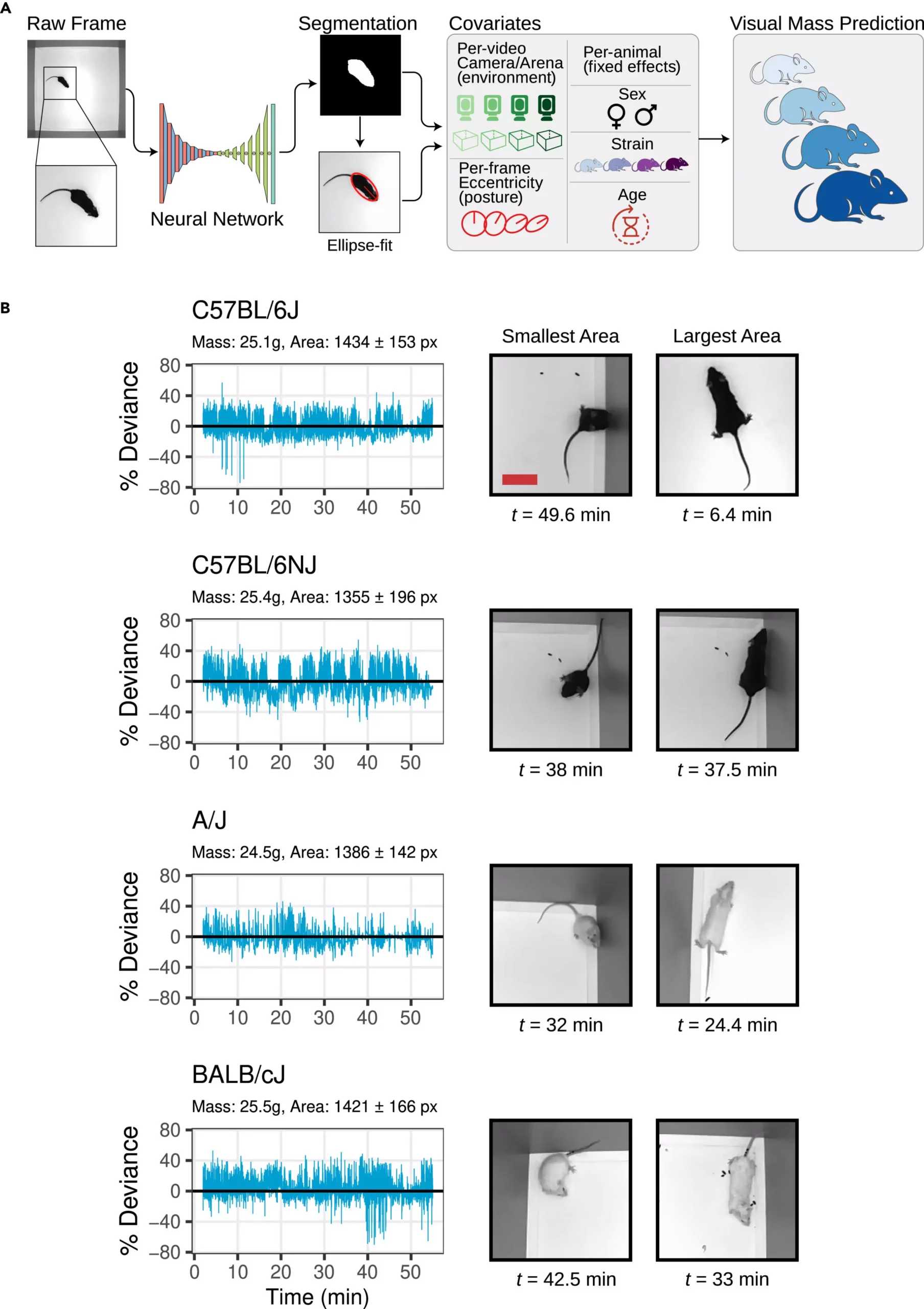In the field of biomedical research, the measurement of body mass in mice has always been a critical metric for assessing overall health and predicting potential health issues. Traditionally, researchers have relied on methods that involve removing mice from their cages and placing them on a scale. However, not only is this process stressful for the mice, but it also introduces variables that can impact the accuracy and reproducibility of experiments. In a groundbreaking new study led by Jackson Laboratory Associate Professor Vivek Kumar, a non-intrusive method using computer vision technology has been developed to revolutionize the way body mass is measured in mice.
Developing a non-intrusive method for measuring mouse body mass presented several challenges for the research team led by Dr. Kumar. Unlike the relatively static subjects used in industrial farming, mice are highly active and flexible creatures that frequently change posture and shape. This required the team to work with 62 different mouse strains, each with unique sizes, behaviors, and coat colors. To tackle this issue, the team utilized multiple visual metrics, machine learning tools, and statistical modeling to achieve the desired level of accuracy. By analyzing one of the largest mouse video datasets, the team was able to develop a method that calculates body mass with less than 5% error.
The use of computer vision technology in measuring mouse body mass offers significant advantages for researchers. One of the key benefits is the ability to detect small but significant changes in body mass over multiple days, which is crucial for studies involving drug or genetic manipulations. Additionally, this new method can serve as a diagnostic tool for general health monitoring and can easily be adapted to different experimental environments and other organisms in the future. By training their models with genetically diverse mouse strains, the research team ensured that their technology could handle the variable visual and size distributions commonly seen in laboratory settings.
The development of this non-intrusive method for measuring mouse body mass has the potential to enhance the quality and reproducibility of a wide range of preclinical studies in biomedical research. By eliminating the stress associated with traditional weighing techniques, researchers can now obtain more accurate and reliable measurements, ultimately strengthening the validity of experimental results. This new technology opens up doors for conducting genetic and pharmacological experiments with greater precision and efficiency. As the field of biomedical research continues to evolve, the use of computer vision technology in measuring body mass could revolutionize the way data is collected and analyzed in preclinical studies involving mice.
The innovative method developed by Dr. Vivek Kumar and his team represents a significant leap forward in the field of biomedical research. By leveraging computer vision technology, researchers now have a non-intrusive way to measure mouse body mass accurately and continuously, offering a more humane and reliable approach to data collection. This breakthrough has the potential to transform the way researchers conduct experiments and could pave the way for new discoveries in the realm of biomedical research.


Leave a Reply